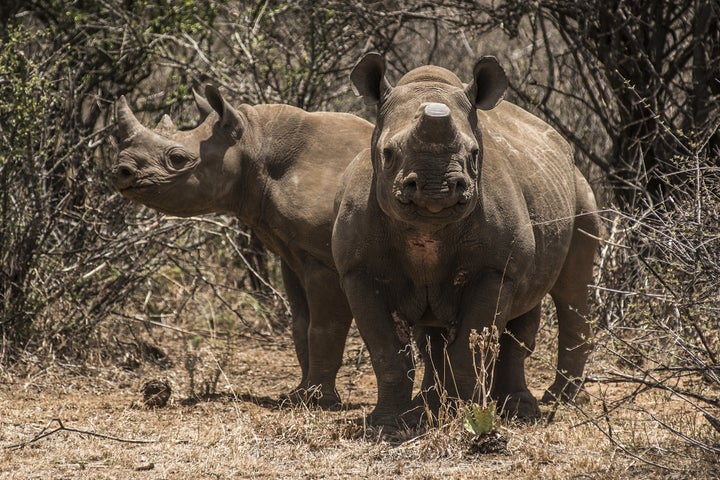
It was only 150 years ago that more than 1 million black and white rhinos roamed the savannas of Africa. Since then, poaching has decimated populations across the continent.
By 1990, there were just 6,000 white rhino and 2,400 black rhino left in the wild.
Conservation efforts and a global crackdown on wildlife crime saved the threatened animals from the brink of extinction. By 2008, white rhino numbers in Africa had ballooned to almost 20,000 while the black rhino population nearly doubled.
It looked like a perfect comeback story, a narrative of hope and survival in the face of terrible odds, but then, the tale of the African rhino took a bleak turn.
According to a new report by the International Union for Conservation of Nature (IUCN), the number of African rhino killed by poachers has increased for a sixth year in a row. At least 1,338 rhinos were killed illegally across Africa in 2015 -- the highest number in almost a decade. Since 2009, almost 6,000 African rhinos have been poached.
Conservation efforts have resulted in a decline in rhino poaching in some parts of Africa, including Kenya and South Africa, the IUCN report said. But, “these improvements have been dampened by alarming increases in poaching over the past year in other vitally important range states, such as Namibia and Zimbabwe,” said Inger Andersen, IUCN's director general.
In light of this disturbing trend, experts have warned that wild African rhinos may be extinct by 2026.
“If we continue with the current rate of losses, then I would estimate that within five to 10 years, all we will have is rhinos in very strictly controlled captivity scenarios and we will basically have lost the species in the wild,” Craig Bruce, a rhino specialist at the Zoological Society of London told the BBC.
This has already become a reality for the northern white rhino -- a subspecies that may have numbered in the thousands in the early 1900s. Today, there are only 3 of left on the planet, all living in captivity.

Demand for rhino horn, one of the world’s most expensive commodities, has been cited as the number one threat to the survival of African rhinos. More valuable by weight than gold or diamonds, rhino horn sells for up to $60,000 per kilogram. It’s particularly sought after in Southeast Asia (Vietnam, in particular) and China where it’s valued as a luxury good and for its perceived “medical benefits.”

Like the similarly-destructive ivory trade, the supply of rhino horn involves “sophisticated transnational organized crime networks,” said the IUCN in a news release.
“Such networks control much of the illegal trade in wildlife, destabilizing communities and countries and corrupting government officials and structures. There is worrying evidence of the increasing involvement of Chinese citizens along with nationals from Southeast Asian countries like Vietnam, Laos and Thailand, as well as North Korea, in the illicit trade in rhino horn,” the organization added.
Saving the African rhino will require “a multi-faceted approach that addresses poaching, trafficking and demand,” Ginette Hemley, senior vice president of wildlife conservation at the World Wildlife Fund, said in a statement.
“The focus should be on implementing effective conservation in Africa and ensuring robust enforcement in source, transit and consumer countries, while simultaneously changing consumer behavior in Asia. Only when demand for rhino horn decreases will we see a decline in poaching,” Hemley said.
